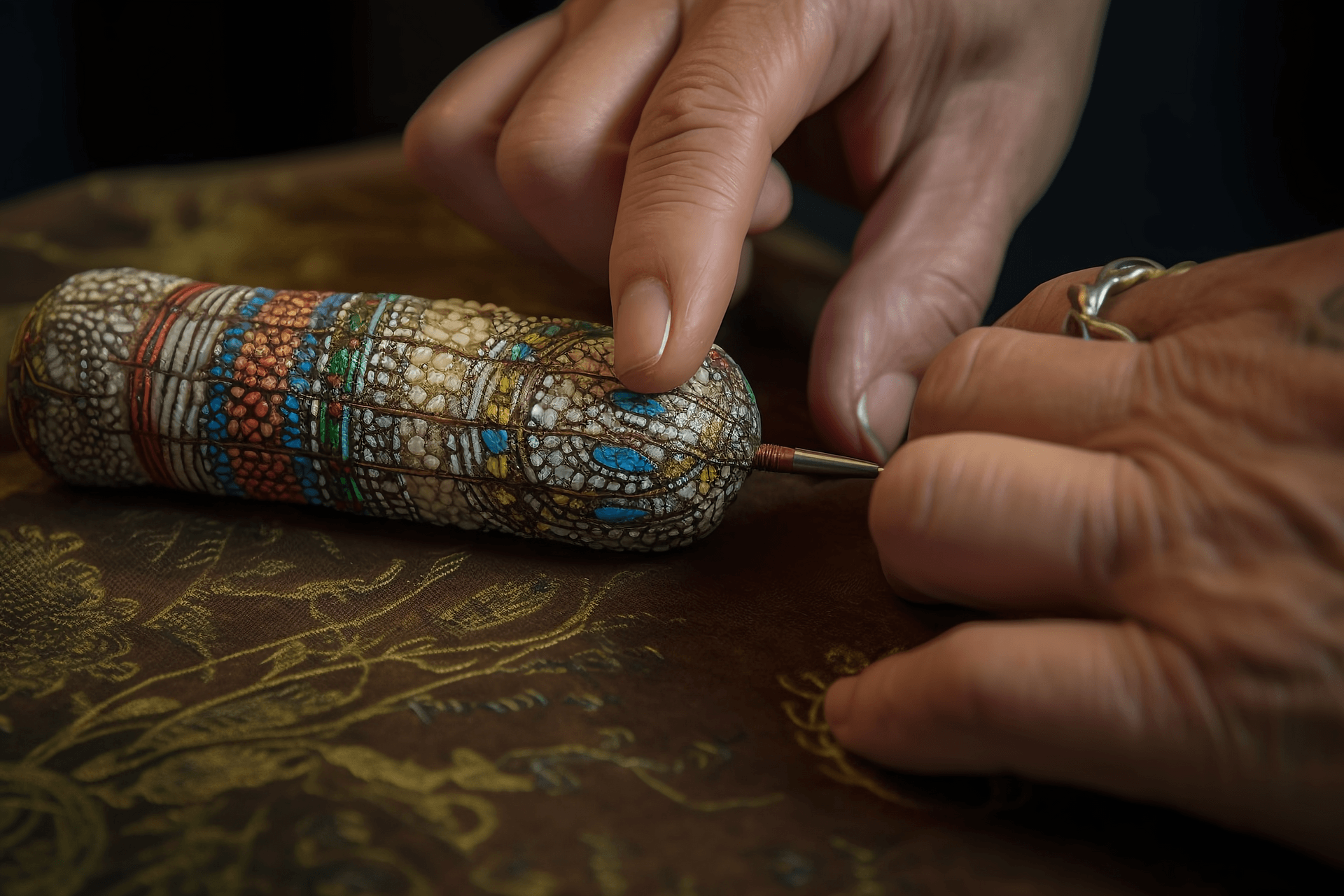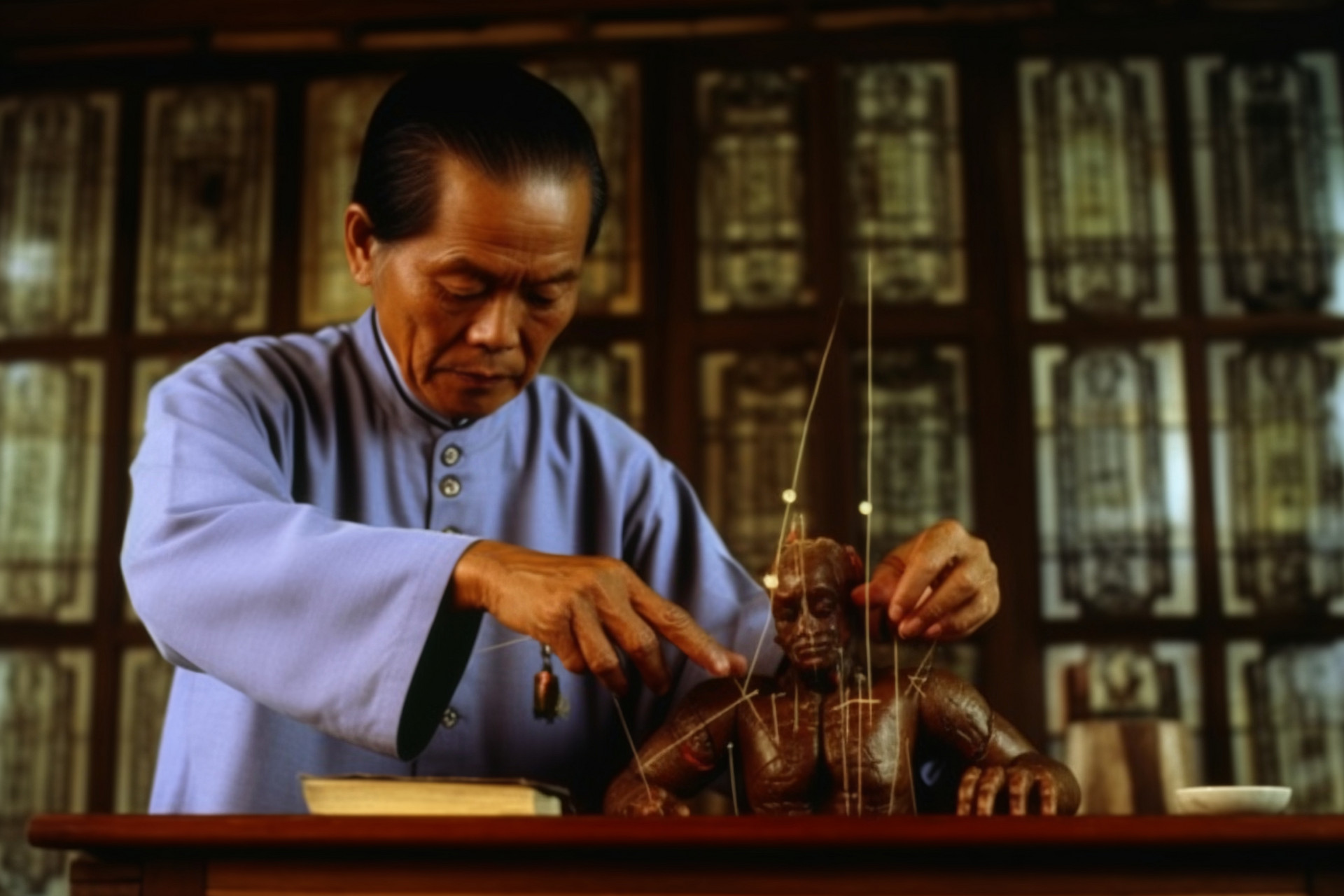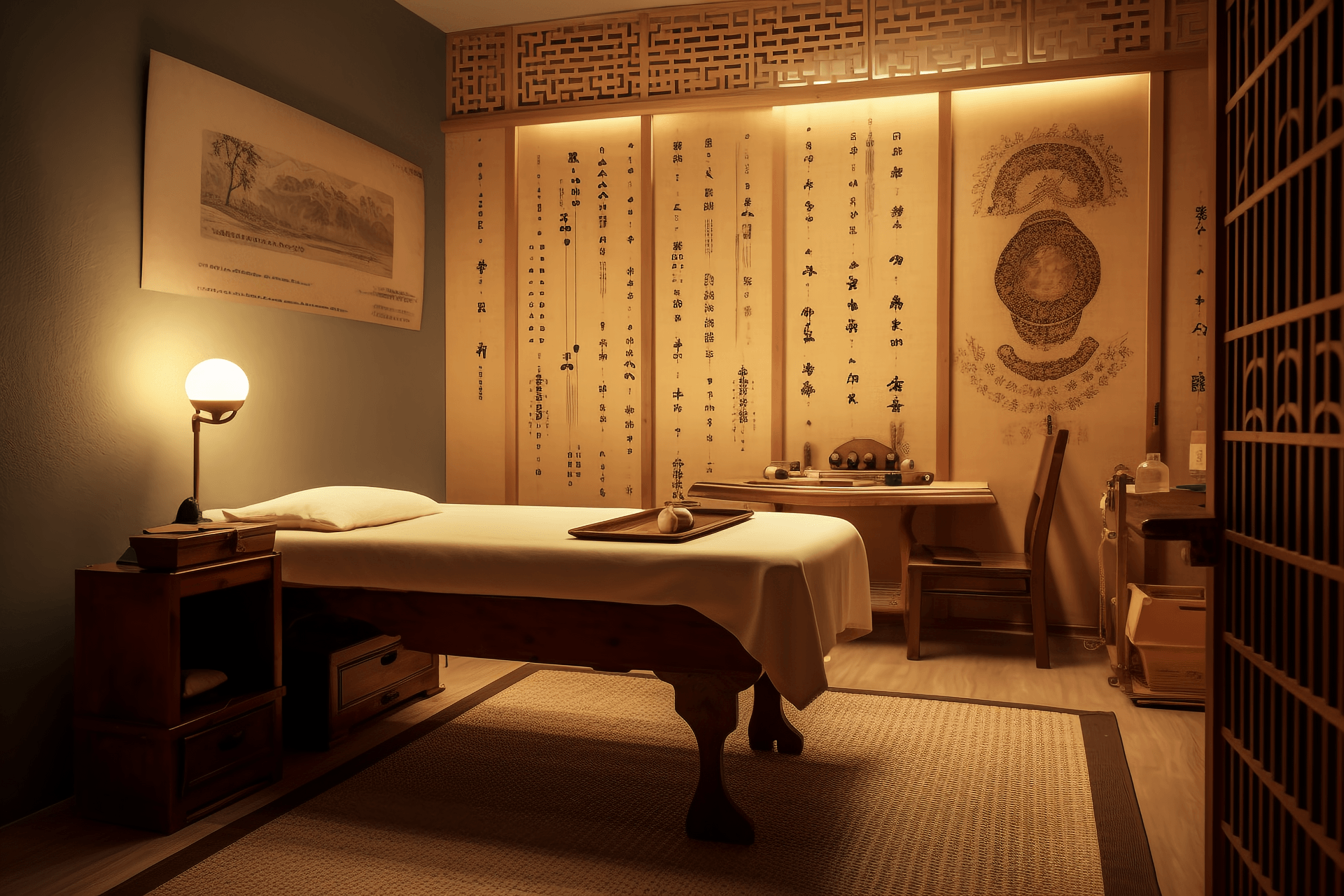Eye acupuncture is a method of treating systemic diseases by needling acupuncture points around the eyeball and the edge of the eye socket. The book "Acupuncture Jia Yi Jing" by Emperor Fu Mi of the Jin Dynasty recorded the use of acupuncture on eye points such as Jing Ming and Zan Zhu to treat diseases. In later generations, numerous acupuncture books have mentioned this method, with an increasing number of acupuncture points and indications. It was developed based on the theories of "Huang Di Nei Jing" and Hua Tuo's "diagnosing diseases by examining the eyes". In the "Ling Shu • Da Huo Lun", it is recorded: "The essence and energy of the five viscera and six bowels are all infused into the eyes to become essence. The essence of the eye is the eyeball, the essence of the bones is the pupil, the essence of the tendons is the black of the eye, the essence of the blood is the network, the essence of the eye socket is the white of the eye, the essence of the muscles is the constraint, and the essence of the tendons, bones, blood, and energy is combined with the pulse to connect with the brain, and it exits from the back of the neck... The eyes are the essence of the five viscera and six bowels, the constant nourishment of the nourishing and defending, the origin of the spirit and energy." This indicates that the eyes are the place where the essence of the five viscera and six bowels is infused, and they are also the place where the human body stores nourishing and defending, qi and blood, and spirit and soul. In addition to the lung, spleen, kidney, and pericardium meridians, which are directly connected to the eyes through their corresponding meridians, the other eight meridians all converge at the eyes, making the eyes closely related to the functions of the internal organs and meridians of the whole body. By needling around the eye socket, it is possible to achieve the purpose of dredging meridians, promoting blood circulation, relieving pain, calming the mind, regulating the functions of the internal organs and meridians, and treating systemic diseases.
【Operational Method】
1. Location of the eye meridian areas
While looking straight ahead, draw a horizontal line through the center of the pupil and extend it to the inner and outer canthus. Then draw a vertical line through the center of the pupil and extend it above and below the eye socket. This divides the eye into four quadrants, and each quadrant is further divided into 2 equal areas, resulting in 4 quadrants and 8 equal areas. These 8 equal areas are the 8 meridian areas. The left eye belongs to yang and yang is generated from yin, so the order of the 8 areas is clockwise; the right eye belongs to yin and yin is generated from yang, so the order of the 8 areas is counterclockwise. However, the organs represented by each area are the same on both sides. Area 1 represents the lungs and large intestine; area 2 represents the kidneys and bladder; area 3 represents the upper burner; area 4 represents the liver and gallbladder; area 5 represents the middle burner; area 6 represents the heart and small intestine; area 7 represents the spleen and stomach; area 8 represents the lower burner. The range of each area is calculated in units of 90 minutes on a clock. For example, area 1 of the left eye is from 10:30 to 12:00; for the right eye, it is counterclockwise, with area 1 being from 7:30 to 6:00, and so on. The acupuncture points of the meridians are as follows: 2 points in each of the 1st, 2nd, 4th, 6th, and 7th areas; 1 point in each of the 3rd, 5th, and 8th areas. These points are collectively referred to as the "13 acupuncture points in the 8 areas of the eye".
The meaning of the three burners in eye diagnosis and the three acupuncture points in eye acupuncture is not limited to the heart and lungs in the upper burner, the spleen and stomach in the middle burner, and the liver, kidneys, and bladder in the lower burner. Instead, based on the discussions on the three burners in the "Ling Shu • Ying Wei Sheng Hui", "Nan Jing • Thirty-One Difficulties", and "Yi Jing Jing Yi Zang Fu Suo Zhu", the distribution of the three burners is expanded to the entire body, both internally and externally. The upper burner refers to above the diaphragm, including the head, face, facial features, upper limbs, chest and back, as well as the heart, lungs, esophagus, trachea, etc.; the middle burner refers to below the diaphragm and above the level of the navel, including the lumbar back, upper abdomen, and the internal organs of the corresponding area; the lower burner refers to below the level of the navel, including the lumbar sacral region, pelvic cavity, buttocks, urinary and reproductive systems, and lower limbs.
The acupuncture points in eye acupuncture summarize the functions of the 361 meridians in the whole body into 13 points, all of which are located around the edge of the eye socket. These acupuncture points are not mentioned in ancient and modern acupuncture books, so they are collectively referred to as "eye orbit area acupuncture points".
2. Methods of diagnosing diseases by examining the eyes
The human eyeball has the most blood vessels. The statement by Hua Tuo that "there are six main vessels inside...eight intermediate vessels...and numerous peripheral small vessels, but no one knows the exact number" is quite consistent with anatomical reality. When diagnosing diseases by examining the eyes, only the blood vessels on the conjunctiva of the eyeball are observed. In a normal person, the blood vessels on the conjunctiva are fine and not obvious. After the occurrence of diseases, the shape and color of the blood vessels change, and diseases can be diagnosed based on these changes.
1. Changes in blood vessel shape
(1) The base of the blood vessels becomes thick and often occurs above the horizontal line of the pupil. If the base is above, it is often due to blood stasis.
(2) The blood vessels become tortuous or even tortuous, often indicating blood stasis.
(3) The blood vessels become longer and extend from one meridian area to an adjacent area, indicating the spread of diseases from one meridian to another.
(4) The blood vessels branch out like tree branches, often occurring below the horizontal line of the pupil. If the root of the lower blood vessels is below, blood flow diversion causes nearby blood vessels to expand and branch out, often indicating blood stasis. This phenomenon often occurs in the heart area of the left eye.
(5) It seems that a blood vessel is raised on the conjunctiva, which often occurs when there are lesions in the six bowels. For example, if the blood vessels in the large intestine area of the left eye are raised, it often indicates hemorrhoids or anal diseases; if the blood vessels in the small intestine area of the right eye are raised, it often indicates duodenal bulb ulcers.
(6) Blood stasis clumps together, often occurring in the liver, gallbladder, and lower burner areas, often indicating stagnation.
(7) It appears like dewdrops, with the extended end of the blood vessels resembling hanging dewdrops, which are often seen in patients with intestinal parasites or blood stasis.
2. Changes in blood vessel color











